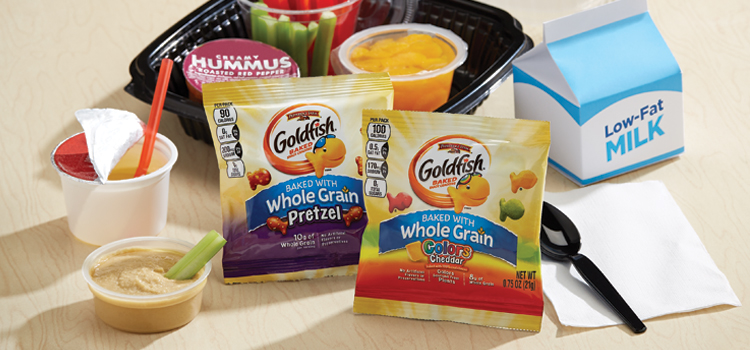This post is sponsored by Campbell’s Foodservice.
As distance and hybrid learning models persist at many schools, the ability to create meals that work in a variety of settings will remain paramount for school foodservice operators. Individually packaged items can serve as convenient building blocks for grab-and-go meals that meet USDA meal pattern requirements and reduce food waste.
The USDA prolonged free meal programs for students earlier this year, extending schools’ abilities to offer free meals to all children through as late as the end of the year.
In order to provide these meals, foodservice operators need a plan that lets them create options that work for students — whether they are in school, at home or alternating between the two.
Grab-and-go meals can work for any of these scenarios. As an in-school offering, they offer flexibility and portability for serving or eating in the classroom or other areas outside the traditional cafeteria setting. For students who are distance learning, meal kits are easy to pick up and store at home if they’re collecting multiple days’ worth of meals.
Individually wrapped items offer convenience and freshness
Using a collection of single-serve items is a simple way to build grab-and-go meals that meet USDA meal pattern requirements. This allows for variety in the menu while keeping assembly relatively simple.
For example, a milk carton, a cup of veggies, a container of hummus and a packet of whole grain crackers or pretzels comes together into a four-item meal that ticks all the nutrition boxes.
“As grab-and-go options are becoming more prevalent, individually wrapped items are a convenient way to help meet grain requirements,” said Jennifer McQuillan, senior nutrition analyst for Campbell’s Foodservice. “With flavor versatility, as seen in our varieties of Goldfish®, operators have the flexibility to be creative and interchange offerings to complement each meal.”
In addition to versatility and convenience, individually wrapped options like Goldfish® Cheddar Crackers and Goldfish® Grahams Made with Whole Grain have a relatively long shelf life compared to bread products, and the sealed packages can help prevent waste.
“Serving meals away from school, early meal schedules and insufficient time to eat pose constraints on operators and students alike,” McQuillan said. “Individually wrapped items help to minimize plate waste by providing the option for the student to eat later in the day.”
Kid-approved foods reduce plate waste
To further minimize plate waste, it’s important to choose foods that students enjoy eating. Offering tasty options with familiar flavors can increase the likelihood that students will eat everything they take.
“Taste preference and unfamiliarity with menu items are amongst the top reasons for plate waste in schools,” McQuillan explained.
Goldfish® is the No.1 cracker brand among households with kids under 12, according to IRI data1, and the fun shapes and variety of flavors can help make meals more appealing to students, no matter where they’re eating.
For more information about creating plug-and-play meal kits with Goldfish® products, download the infographic.
1. IRI National Consumer Panel, Total US – All Outlets, 52 Weeks Ending August 9, 2020.
